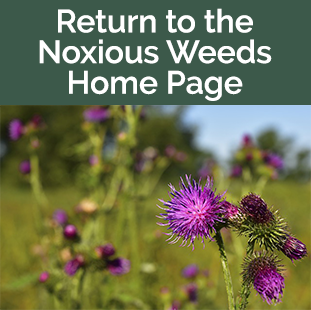Mapping Resources
Apps or programs to report noxious weed/invasive plant locations are signified by a plus (+) symbol. It is imperative when reporting infestations to include GPS coordinates so if follow up is needed there are no questions as to location. Attach photos as they can assist with locating the site and with identification. If reporting a possible EDRR species do not remove plant until instructed to do so.
Montana Noxious Weed Dashboard: View Noxious Weed Trust Fund Grant data and weed points.
EDDMapS:
- + Website: Site contains ways to report weeds along with tools and trainings pages to learn how to use their services.
- + EDDMapS and EDDMapS Pro Apps: Download apps using the provided QR Codes
- EDDMapS Pro Guide - Coming soon
- EDDMapS Pro Daily Checklist: Learn what one needs to do to prepare for field and offline use.
- Bulk Uploads: Use to load lots of data at one time.
- EDDMapS Bulk Upload Guide - Coming Soon
*Noxious Weed Trust Fund grants are required to enter and/or upload weed infestation data to EDDMapS. Weed point maps created from EDDMapS need to be attached in status reports and applications for local cooperatives*. Below are guides to walk through the steps to create point maps as well as convert GPS files from other sources to load data to EDDMapS’ website.
Guides: Coming Soon
- Create Weed Point Maps in EDDMapS
- EDDMapS Project Area and Weed Points Guide
- ArcGIS to EDDMapS
- onX to EDDMapS
Montana Natural Heritage Program apps through ArcGIS Survey123
- + Heritage Observation Collector
- + Rapid Weed Reporter
+ iNaturalist: map all taxa (animals, plants, birds, insects, etc.) whether invasive or native species.
Share, Load, or Convert Files: Information collected using other mapping services, whether handheld GPS devices, Google Earth, ESRI products or other apps/programs may need to be converted to use elsewhere in other format types. Visit Minnesota DNRGPS to download software on a computer. This is free and highly useful to anyone working with GPS data as the conversion is extremely quick.
Monitoring Resources
Photo Points (Before and After photos):
Photos are a basic type of monitoring when taken before and after treatment to visually track changes. This type of monitoring contains no data and therefore is qualitative requiring repetition and consistency. Below are various instructions, guides, and videos containing helpful tips to improve the quality of images one takes for this purpose.
- Establishing a Photo Point
- Photo Point Record Card
- Photo Point Monitoring – USDA Forest Service Remote sensing
- Quick Guide to Photo Point Monitoring – USDA NRCS
- Videos Resources
*Photo points are required for Noxious Weed Trust Fund grants to be included in status reports. Reimbursements can be delayed or withheld if not done correctly. *
Montana Monitoring Protocols
Created by Dr. Jane Mangold and Dr. Lisa Rew of Montana State University.
- Protocol - Coming Soon
- Build a Half-Meter Frame Instructions
Montana Noxious Weed Monitoring Toolbox
Created Bethany Allan of Park County Environmental Council (PCEC)
The toolbox provides resources on using Survey123 to complete the digitized all encompassing to enter monitoring data.
Documents: Coming Soon
- Toolbox Survey 123 Training Document
- MSU Noxious Weed Monitoring Protocol and Spreadsheet
- Toolbox Weed Mapping Guide
- Survey 123 Connect Files (ArcGIS Online Users)
- Survey 123 Data Request Form
- Level 3 Species Codes
Training Clips:
Survey 123: Montana Noxious Weed Monitoring Toolbox (Part 1)
SIMP (Standard Impact Monitoring Protocol ):
Used for monitoring biological releases and the form can be found on Montana Biological Weed Control Coordination Project’s website.
Request Trainings:
To request trainings for mapping and monitoring email nwtf@mt.gov. Some examples are:
- How to map weeds
- EDDMapS website and various apps such as EDDMapS Pro as well as others
- Monitoring how to take photo points and/or use monitoring protocols
- How to convert GPS files

